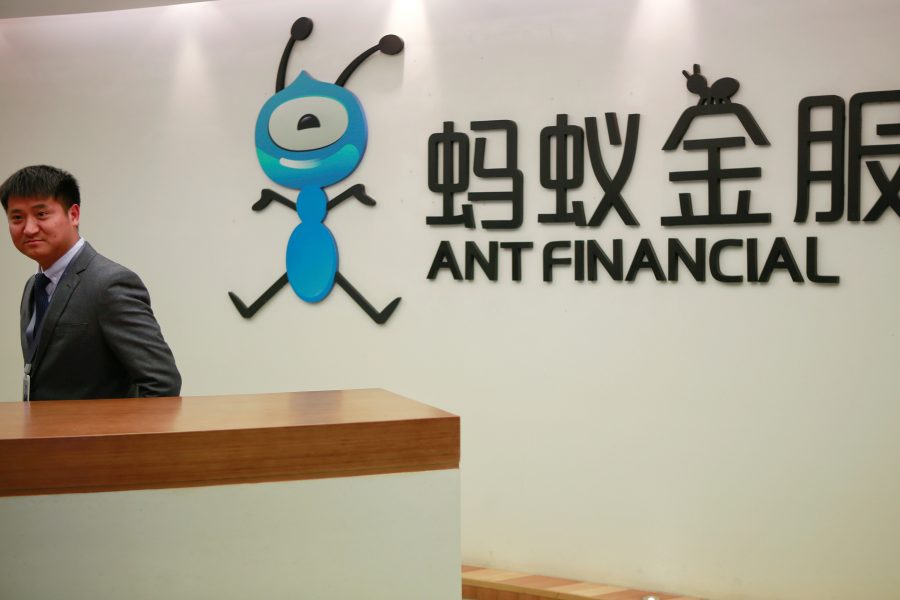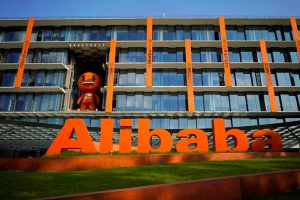Ant Group, the Chinese financial technology giant backed by Alibaba Group, gave the public a first look at its financial health on Tuesday when it filed for a dual listing in Hong Kong and Shanghai in what is potentially the world’s largest IPO.
The company is targeting a more than $200 billion valuation in the dual listing, which would put it only behind Industrial and Commercial Bank of China (ICBC) and Ping An Insurance among financial-related firms in China and put it on par with global sector rivals like PayPal, which is valued at $237 billion.
Ant would also be one-third more valuable than Wall Street titans Goldman Sachs and Morgan Stanley combined.
Here are details about the company and its businesses:
RISING REVENUE
The company recorded 72.5 billion yuan ($10.50bn) in revenue in the first half of the year, up 38% year-on-year. Net profit rose nearly 11 times to 21.9bn yuan over the same period.
Ant traces its beginnings to Alipay, which was launched by Alibaba in 2004 as a payment service that aimed to address concerns of Chinese buyers and sellers about transacting online in the country’s then-nascent e-commerce market.
However, Ant’s portfolio of services have now expanded far beyond Alipay.
ALIPAY
The digital payment and merchant service was Ant’s major source of revenue between 2017 and 2018 but by the first half of 2020 only brought it 36% of revenue because of slower growth in the payment sector, according to its prospectus.
Revenue from the payment services is primarily generated by charging merchants transaction fees based on a percentage of volume. More than 80 million businesses use Alipay to reach 711 million monthly active users who rely on the “super app” for various daily tasks, from cellphone top-ups to food delivery.
Its current major rival is Tencent Holdings’ WeChat Pay, which was launched in 2013. However, Alipay still dominates China’s third-party mobile payment market by transaction volumes, which the company said reached 118 trillion yuan on its platform in mainland China and 622bn yuan overseas for year to end-June.
TECHNOLOGY SERVICE FEES
Ant began making the bulk of its revenue from its digital finance technology platform in 2019. The platform, which charges fees from partners including commercial banks, mutual fund managers, insurers and trust firms, contributed 63% to Ant’s revenues in the first half of 2020.
These financial institutions pay fees for access to a wide customer base via Alipay and for Ant’s risk management and other technology. Ant itself doesn’t bear such products’ credit risks.
Ant splits the platform into three parts: CreditTech, InvestmentTech and InsureTech.
CreditTech, which contributed close to 40% of Ant’s revenue in the first half of the year, holds Ant’s consumer credit business that involves Huabei, which operates like a virtual credit card and short-term consumer loan provider Jiebei. It also includes small-business lending services offered through online bank Mybank.
The unit had a total lending balance of 2.1 trillion yuan at the end of June, of which 1.7tn yuan was consumer credit. That compares with 8.1tn yuan of short-term consumer loans issued by Chinese banks.
InvestmentTech, Ant’s wealth management business, includes its flagship money market fund Yu’ebao, already one of the world’s biggest.
The segment facilitated 4.1 trillion yuan worth of investments as of June through Yu’ebao and other third-party products from about 170 asset managers and contributed 15.6% to Ant’s revenue in the first half.
The smallest revenue contributor is called InsureTech, under which Ant works with around 90 insurers in China and offers a range of insurance products covering life, health and property and casualty.
• Reuters
This report was updated on Jan 9, 2022 for style purposes.
READ MORE:
TikTok plans to challenge Trump’s ban amid some scepticism
Ant Group plans consumer finance firm
























